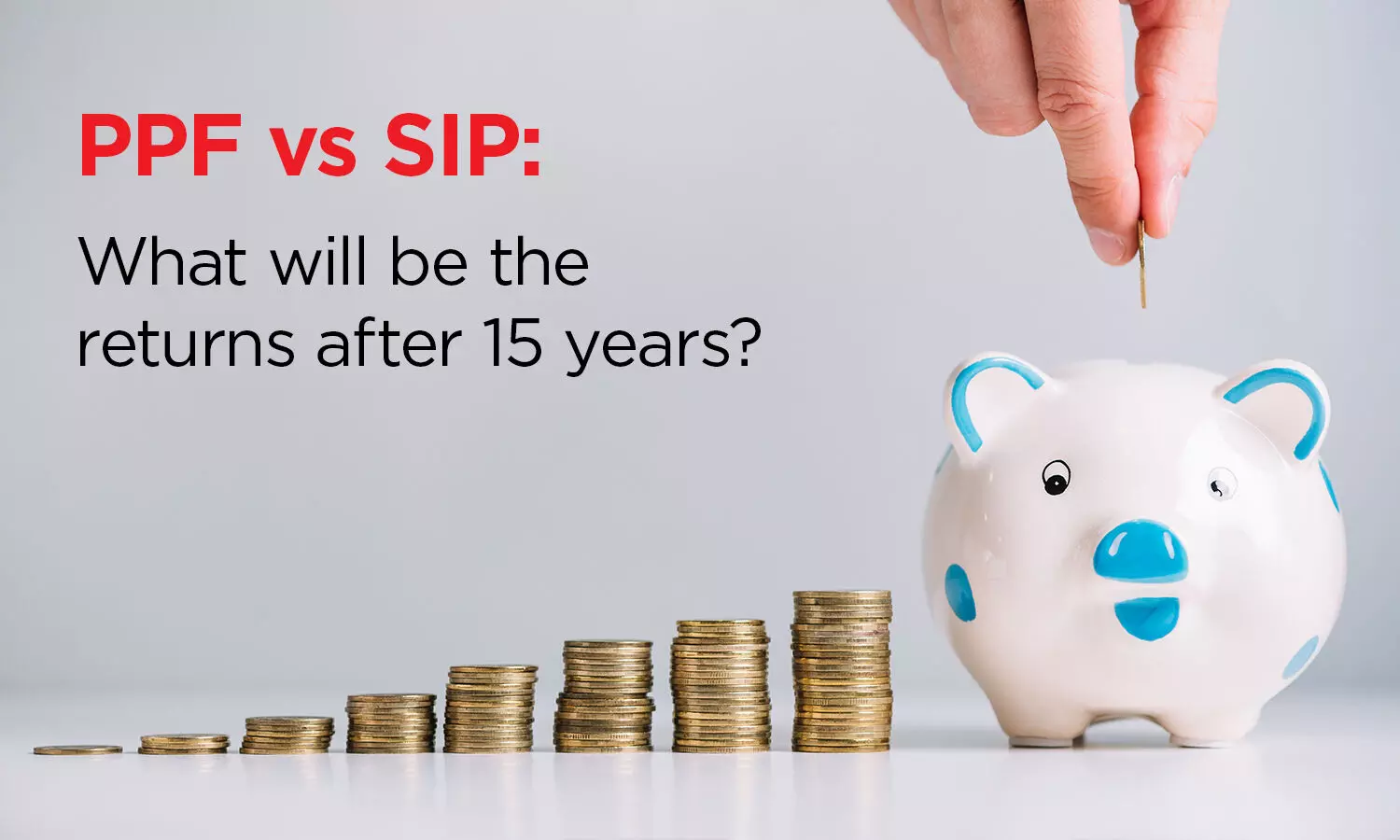PPF vs SIP: What will be the returns after 15 years?
PPF & SIP, both the most sought-after investment plans, have their own set of intricacies and benefits. Have a read to know more about their returns.
image for illustrative purpose

Returns matter a lot. It's our capital. — Abigail Johnson.
Investing in the right scheme is crucial for building your wealth. There are a plethora of options available in the market, and there is always a confusion to choose the best. PPF, Public Provident Fund, and SIP, Systematic Investment Plan are two options that are suggested far and wide that offer good benefits and tax exemption.
PPF and SIP investment strategies:
SIP- A flexible investment plan allows us to invest regularly in mutual funds. We can decide the amount we want to invest and the frequency. This scheme can reduce the impact of market volatility and is a comfortable way to enter the equity market.
PPF- A long-term financial planning that the government backs with a locking period of 15 years, but after the sixth year, partial withdrawals are allowed. With a fixed interest rate, the scheme is sustainable & apt for wealth accumulation & retirement plans.
PPF vs. SIP comparison
Let us have a glance at the main parameters
Investment returns calculation- PPF vs. SIP returns after 15 years
Let us consider a monthly investment planning of Rs 10K to calculate returns.
SIP
If you invest 10k per month in the scheme, it means you are annually investing 1,20,000 INR per year. Over a period of 15 years, you're accumulating 18,00,000 INR. The average returns are 12% in contemporary times, and 32,45,760 INR can be obtained as the capital gain. After 15 years, the total returns will be 50,45,760 INR, which is a significant amount.
PPF
The government is currently offering returns of 7.1% through this plan. If you invest 10k per month in the scheme, it means you are annually investing 1,20,000 INR per year. Over a period of 15 years, you're accumulating 18,00,000 INR. If we calculate as per the interest of 7.1%, 14,54,567 INR can be obtained on interest, and a total of 32,54,567 INR can be obtained on maturity.
Now, you might have a question about what to decide after looking at the PPF and SIP performance comparison and the long-term results. Here are a few key takeaways from the PPF vs SIP growth calculation:
· With SIPs, you can build returns and wealth over a period of time if you're young.
· If you're looking for a safe investment without any losses and market ups and downs, then PPF is the best.
· Long-term equity fund SIPs work better than short-term investments.
· A mix of both policies will create a perfect plan and ample wealth.
If you have any further inquiries on the PPF vs. SIP comparison, don't hesitate to reach out to us!

